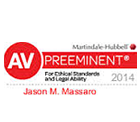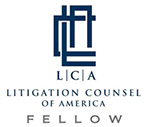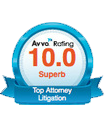Law firm management is a large part of running a successful practice. The law is blind. In the real world, the law doesn’t take sides. Instead, the big win goes to the legal team that presented the most convincing case. You simply cannot present the most convincing case without solid preparation. That preparation starts immediately with the client.
Develop a good Engagement Agreement and use it with all new clients. Make sure to explain what the matter is, scope of services you intend to provide, and any services you will not provide. Outline how the client will be billed and at what rates, how retainers will be handled, how withdrawal or termination may occur, and the manner by which other attorneys and staff may bill on the matter. Be sure to identify the client, and who is financially responsible. When representing an entity, getting a personal guaranty is a good practice. Next, add a Terms page highlighting your office policies for things like methods of responding to messages, expectations for returning calls, whether you bill for emails, and other expectations applicable to your practice areas.
It is a good policy to take retainers and ensure they are replenished ahead of complete depletion. Determine during or, if possible, before the intake meeting whether a client can pay what it may cost given the matter. This has a variety of benefits including keeping accounts receivable down and reducing the need to chase payments. Consider whether you are interested in accepting credit card payments. Some firms maintain a policy that credit cards will not be accepted for the payment of retainers given the rigors of an IOLTA account.
If you use a billable model, save time on billing by getting a good software program. There are so many options today and plenty of articles summarizing the pros and cons of each. Select one you find easy to use, that is not too complicated for your firm size and which has a strong customer support center. Do your research. Everyone needs a professional invoice. A program that can create both an Operating and IOLTA Ledger is extremely useful. As a rule, always show all expenses and finances charges. Moreover, ensure that when you bill clients, your invoices have detailed time entries. Remember that you are writing the bill for your client to understand. Writing with the audience in mind will help to avoid billing disputes. As examples, include the type of document, what it regards, the issue(s), and the approximate number of pages. Break down your activities, so the client can understand what they are paying for. When you read your time entry, the amount of time billed for the service provided should be justified by the description. For example, “Began preparation of discovery to include [request for production of documents]… regarding….” and “Continued preparation of 50 page discovery request regarding… for…” These practices will result in far less client calls asking for clarification about what you were working on and will avoid a belief that they are being double billed or “nickeled-and-dimed.”
File management is critical. This is one of the most crucial aspects of the practice of law because it impacts so many areas. With excellent file management protocol, your work is organized, enabling you and others to find information quickly. It also reduces your risk of loss and error as well as wasted time, which equates to wasted revenue. Remember that an organized file sends a profound message to clients, opposing counsel and the court about your work standards and your attention to detail.
One good method is to use separate folders for different types of documents. This will be practice specific to a degree. For litigation practices, have separate pleadings, discovery, orders, etc., folders in your file, and number each index to identify it, e.g., Pleadings Index 1, Pleadings Index 2 and so on.
Create indexes that identify the documents in each file. The different documents should be separated by numbered or lettered tabs that are then referenced on that particular index. Identify, in separate columns, the tab number, document description, the filing or served date, and any associated deadline or due date. Identify and separate the categories necessary in your practice. Keep the files neat and stacked so that there are no “dog-eared” pages. Acco-brand clips, or equivalent clips, are great for easy access and removal. Avoid the two-prong fasteners as they tend to destroy files over time.
Also, avoid removing the original from the file if possible. Buy a “Working Copy” stamp, have a copy of the document made or printed, stamp it so you know it is not the original document, and recycle it when done or put it in a separate folder in the file if the notes written on it prove helpful. Firms that manage a file system heavily reliant on digital computer files can scan the bulk of paper received and manage with a “Working File” of the main documents. If you have or want to implement a system like this, buy a “Scanned” stamp. Once your master copy of the original document is scanned, if you still need it accessible, you can stamp it and place it inside your Working File. If there is a need to retain the paper copies of important originals, you can always add them to a sheet protector inside of the Working File.
In your physical file, ensure that you place and keep current all contact information on the case such as the case number, court, the client, opposing counsel, etc. Place this consistently in a particular folder, such as the Correspondence folder, or locate it on the inside cover of your case file.
Given all of the dates and deadlines attorneys deal with, always use redundancy in calendaring. Your malpractice insurer will love you, and there is good reason. Calendaring methodology is a standard question your carrier will ask, and it will affect premiums. Use both a shared electronic calendar and a paper calendar. If you have an assistant, ensure that he/she is also responsible for tracking your work calendar. If you are using case management software, determine whether there are built-in reminder notifications for deadlines that you could be using. If you do not have case management software, some email programs, like Outlook, have a good calendaring and notification feature. It also pairs well with your mobile device, and inputted directions are great because they can link directly to Google Maps.
Finally, consider and plan your office space carefully. Blend into the decor what makes you most productive with what makes your clients most at ease. The feeling a client gets walking into your office will set a lasting tone for your relationship. To the extent you have control, consider colors, layout and décor with your target market in mind. Wherever you meet clients, put something personal about yourself in addition to your family and your professional accomplishments. Being relatable eases tension, builds trust, personalizes you, breaks the ice, and lets the client know that you are more than a stuffy lawyer.














